A Sustainable Natural Food Color Solution
In today's digital age, it's common to see pictures of brightly colored foods splashed all over the internet. Consumers don't just want to enjoy a tasty treat, they want a visually appealing experience that can be captured and shared through imagery.
Creating richly colored recipes can help you attract attention in your own social media marketing campaigns, but what's the secret to making bright blue smoothies and color-changing cocktails? You can achieve beautiful colors in your dishes with the use of natural food coloring powders! Not only do they offer a healthier alternative to artificial food coloring, but they also provide a range of beautiful hues that can be used to naturally color foods.
Yangge Biotech is one of the most trusted suppliers of natural food colorants, we proudly offer natural yellow, red, and green colors that provide a vibrant, sustainable, and clean-label alternative to synthetic dyes. In this article, we’ll explore the science, benefits, sources, and applications of these nature-derived colors, and why they are the future of food innovation.
Types of Natural Food Coloring
If you're looking for a food coloring substitute that's free of mysterious ingredients and chemicals, try using these natural food dyes to create every color of the rainbow. From natural pink coloring to deep purple hues, the colors created by these powders can rival the results of traditional food coloring. The best part is that you might already have some of these powders in your spice cabinet!
The innovation in the natural food color industry has not only resulted in stable products, but also in establishing simple and gentle non-selective extraction methods. This work has resulted in the establishment of the category of “Coloring Foods”. This means that today we have two categories of natural food colorants: The Natural Food Colors originate from a wide range of sources like vegetables, fruits, plants, minerals and other edible natural sources. The natural food color pigments are selectively extracted from the natural source materials and are formulated with carriers and additives to provide additional properties to the pigment such as better solubility or higher stability.
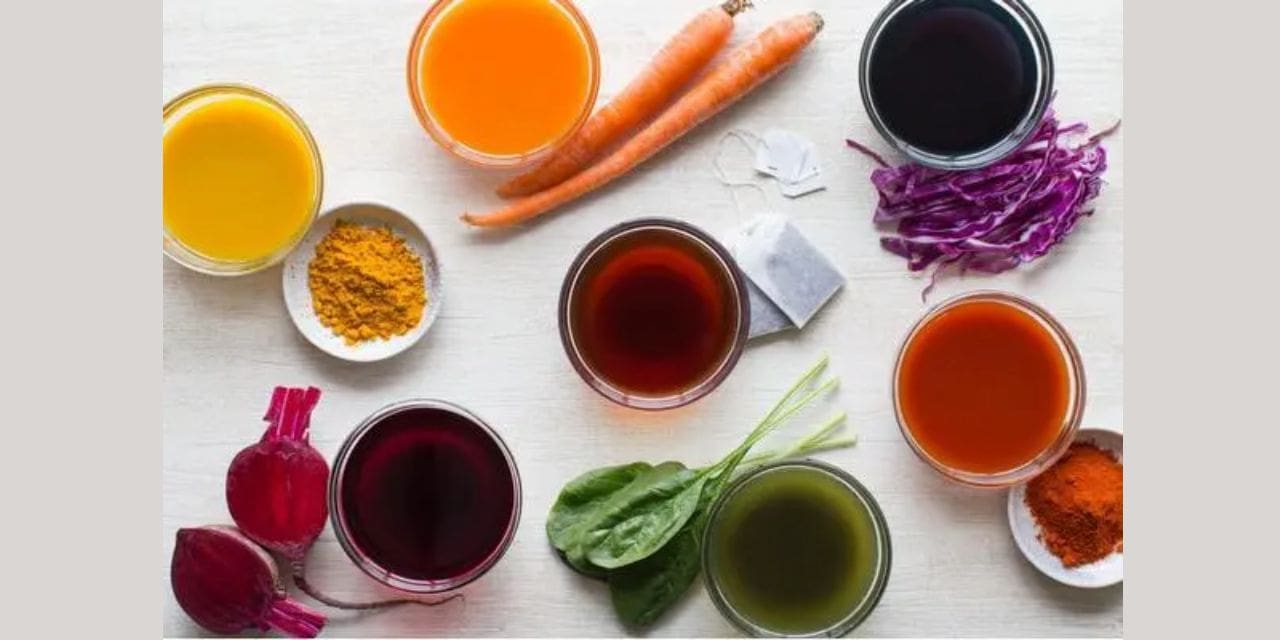
| Colour | Example Source Materials | Principal pigments |
|---|---|---|
| Red / Pink / Purple | Black Carrot / Red Cabbage / Grapeskin / Elderberry Beetroot Cochineal / Carmine Tomato |
Anthocyanin Betanin Carminic Acid Carotenoids (Lycopene) |
| Orange | Annatto Carrot Paprika |
Carotenoids (Bixin / Norbixin) Carotenoids (Beta-Carotene, Apocarotenal) Carotenoids (Capsanthin and Capsorubin) |
| Yellow | Carrot Turmeric Safflower Lutein |
Carotenoids (Beta-Carotene) Curcumin Mixture Xanthophylls (Zeaxanthin) |
| Green | Fescue Grass, Alfalfa Grass | Chlorophyll / Chlorophyllin |
| Black | Vegetable Carbon Black | – |
| Brown | Burnt Sugar | – |
| Blue | Spirulina | Phycocyanin |
| White | Titanium Dioxide, Calcium Carbonate | – |
1. Beetroot Powder
Made from red beets, beetroot powder can add an intense red hue to your dishes. It's a great option for creating natural red food coloring in a range of sweet and savory dishes, from baked goods to beverages. Add a teaspoon of beetroot powder to cake or cookie batter to give it a pink or red tint. Or try mixing a pinch of beetroot powder into icing or frosting to create a visually appealing treat. Keep in mind that a little goes a long way with beetroot powder, both in color and flavor. It can impart an earthy flavor to your dishes if you use too much.
What Colors Can You Create: Light pink, rich red, deep purplish red
Best Types of Foods to Use: Smoothies, ice cream, baked goods, frostings and creams, sauces and dips, pasta and noodles
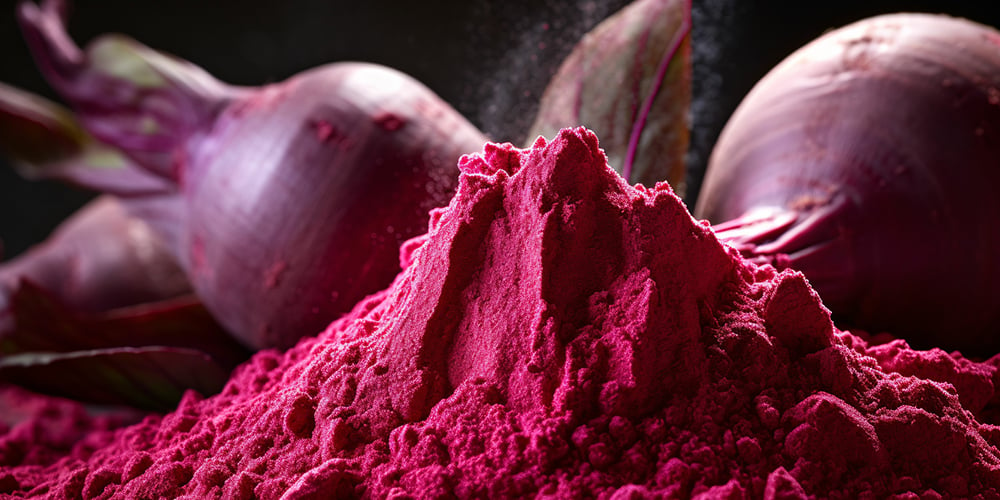
2. Turmeric Powder
Turmeric powder is a popular choice for natural yellow food coloring because of its intense hue. Unlike artificial food dyes, which can often contain harmful chemicals and additives, turmeric is a safe and natural alternative. Plus, it's readily available and affordable, making it a convenient option for both home cooks and commercial kitchens.
Turmeric can be used to give a golden yellow tint to cakes, cookies, and even ice cream. Transform a plain white sauce into a vibrant yellow one or make a golden latte by combining turmeric with milk, honey, and a sprinkle of cinnamon. Start with a small amount of turmeric to create a natural yellow shade and then adjust to your desired color intensity.
What Colors Can You Create: Lemon yellow, dark golden yellow, orange, dark orange-brown
Best Types of Foods to Use: Curries and stews, smoothies and juices, ice cream, baked goods, frostings and creams, sauces and dips, pasta and noodles
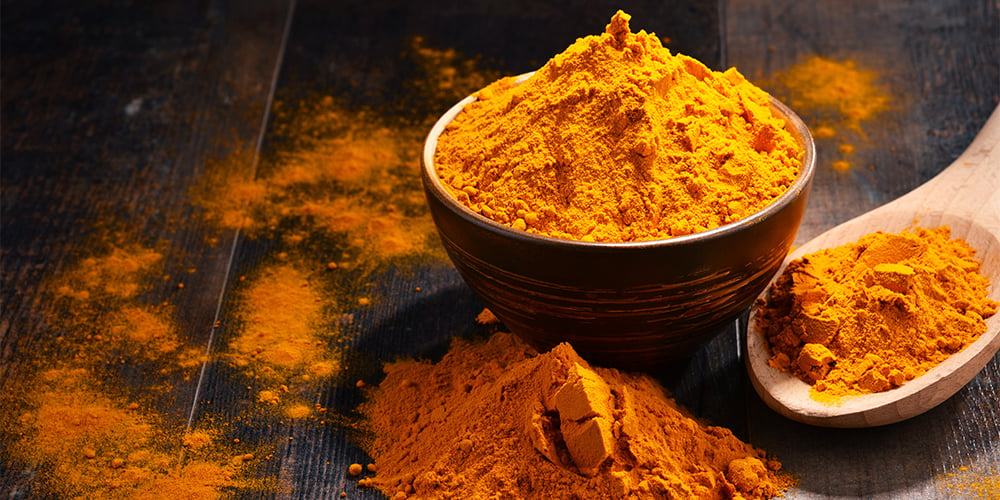
3. Spirulina Powder
Spirulina powder is a natural food coloring derived from blue-green algae. Packed with essential nutrients like protein, vitamins, and minerals, it offers numerous advantages as a natural food coloring option. Not only does spirulina powder provide appealing shades of green and blue, but it also adds a nutritional boost to your products. Whether you're looking to enhance the visual appeal of baked goods, beverages, or even savory dishes, spirulina powder is a versatile and healthy alternative to artificial food coloring.
In addition to its nutritional benefits and natural color, spirulina powder is also versatile and easy to use. It can be mixed into various recipes without altering the taste significantly, making it an excellent choice for those who want to add color without compromising the flavor profile of their dishes.
What Colors Can You Create: Pale green and blue, bright teal, dark saturated blue
Best Types of Foods to Use: Bubble tea, cupcakes, cookies, frosting, smoothies, ice cream, pasta, sauces
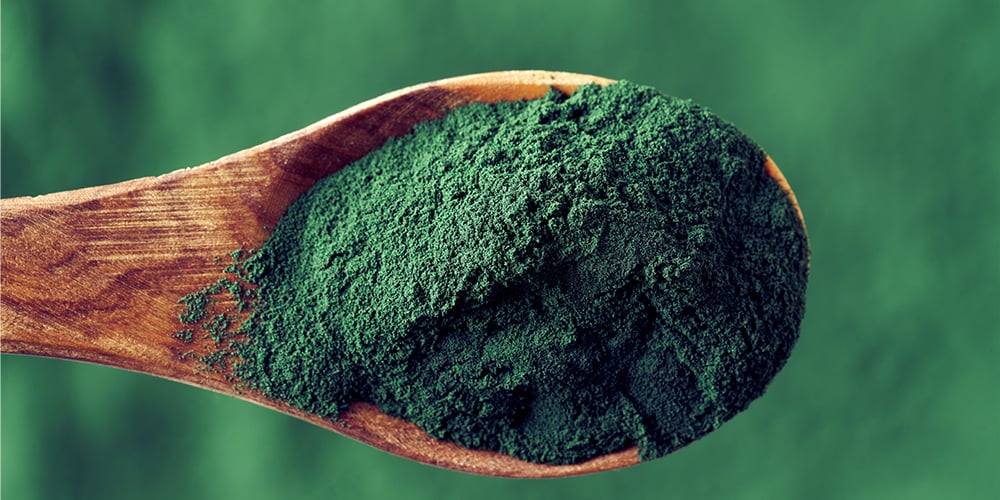
4. Matcha Powder
Matcha powder is a green powder made from finely ground green tea leaves. An easy way to use this natural green food coloring is in your baked goods. By adding a teaspoon or two of matcha powder to cookie or cake batter, you can achieve a beautiful green color without the need for artificial food dyes. Not only does this add a pop of color to your treats, but it also adds a subtle earthy flavor that pairs well with sweet desserts.
Another way to use matcha powder as a natural food coloring is in beverages. Whether you're making a smoothie, latte, or cocktail, a small amount of matcha powder can give your drink a colorful green hue.
What Colors Can You Create: Light mint green, medium green, dark vibrant green
Best Types of Foods to Use: Lattes and hot beverages, smoothies and juices, ice cream, baked goods, frostings and creams, sauces and dips, pasta and noodles

5. Annatto Powder
Annatto powder is made from the seeds of the achiote tree, which is native to tropical regions of the Americas. These seeds are ground into a fine powder, resulting in a natural food dye that can add a beautiful golden yellow to deep orange color to your dishes.
One of the key benefits of annatto powder is its versatility. It can be used in a variety of culinary applications, from savory to sweet. Try annatto powder in sauces, soups, and marinades to give them a visually appealing touch. It can also be used to give a golden hue to rice dishes, such as paella or biryani.
What Colors Can You Create: Bright yellow, golden orange, reddish-orange
Best Types of Foods to Use: Cheese, soups, sauces and dips, beverages, baked goods
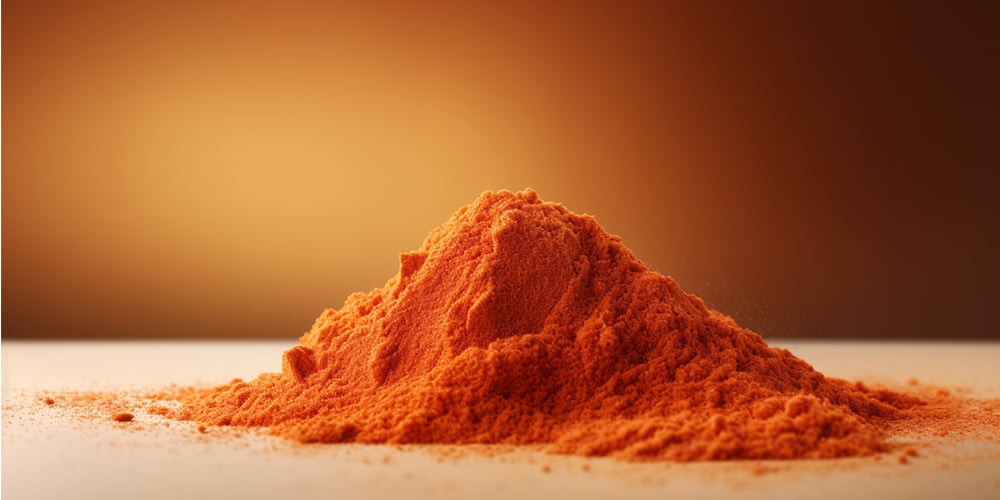
6. Purple Sweet Potato Powder
Purple sweet potato powder is made from dehydrated purple sweet potatoes, which are a variety of sweet potatoes with purple flesh. This colorful tuber is often confused with other purple root vegetables like ube or taro, but they are all dinstinctly different. Purple sweet potato is more readily available in the US, making it a convenient option to use as a natural purple food coloring.
These sweet potatoes are packed with anthocyanins, which are natural pigments responsible for their richly saturated color. Whether you're making baked goods, smoothies, or even savory dishes, purple sweet potato powder can be easily incorporated to give your creations a natural pop of color.
What Colors Can You Create: Subtle pink, light lavender, violet
Best Types of Foods to Use: Smoothies, ice cream, baked goods, frostings and creams, pasta, bread dough
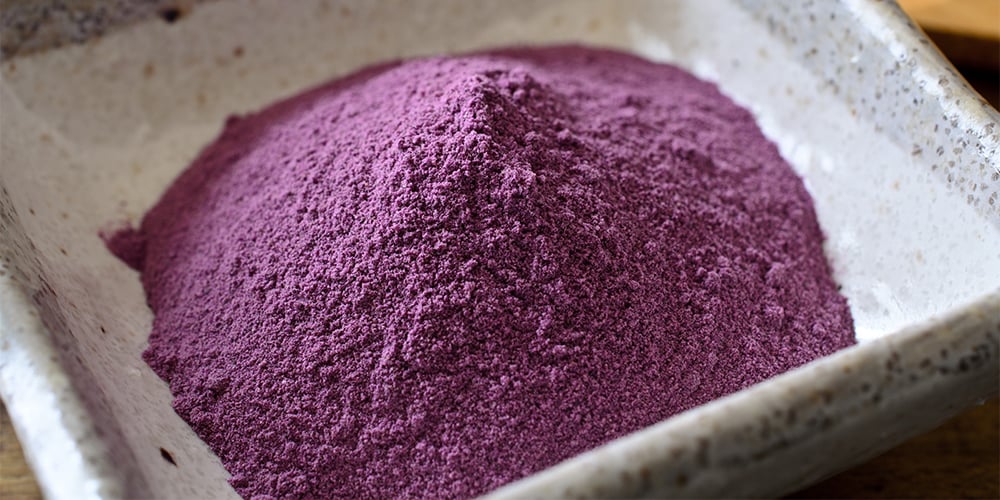
7. Pitaya Powder
Pitaya powder, also known as dragon fruit powder, is derived from the bright pink or red flesh of the dragon fruit, a tropical cactus fruit. The fruit itself is not only visually appealing but also packed with essential nutrients. Pitaya powder is made by freeze-drying the fruit and grinding it into a fine powder. This process helps retain the fruit's natural color and preserves its nutritional value.
One of the main advantages of using pitaya powder as a natural pink food coloring is its intense and eye-catching color. The powder produces a pink or magenta shade, perfect for adding a pop of color to your baked goods, beverages, desserts, and more. Whether you're making macarons, smoothie bowls, or frosting, pitaya powder is sure to elevate the visual appeal of your creations.
What Colors Can You Create: Bright pink, deep magenta
Best Types of Foods to Use: Smoothies, ice cream, baked goods, frostings and creams, pasta, bread dough, candies
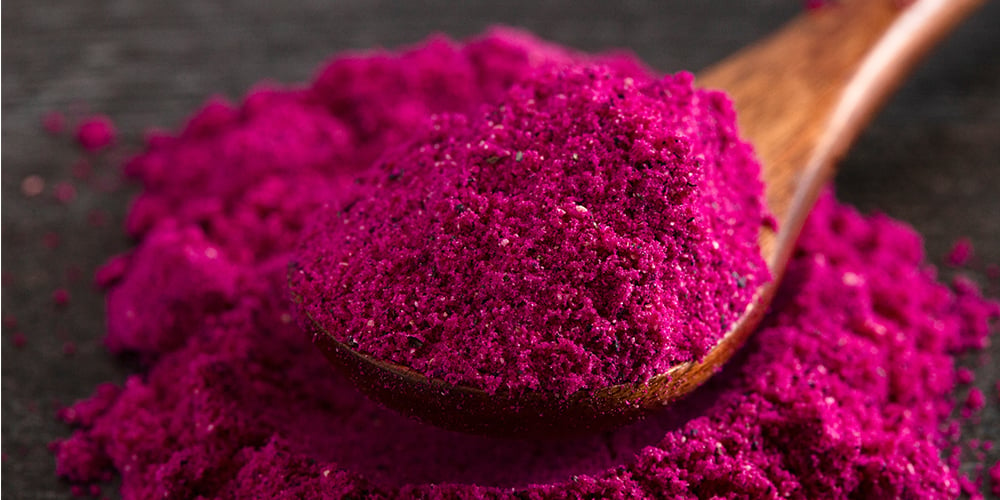
8. Charcoal Powder
Charcoal powder is a natural black food coloring option that is gaining popularity in the culinary world. Made from burning organic materials like coconut shells or wood, charcoal powder is finely ground to create a versatile black pigment. One of the advantages of using charcoal powder as a natural food coloring is its dark black color, which adds a dramatic touch to dishes and desserts. Its neutral taste ensures that it won't alter the flavor of the food it is added to, making it a great choice for bakers and chefs looking to create visually stunning and natural creations.
What Colors Can You Create: Light gray, dark charcoal gray, deep black
Best Types of Foods to Use: Smoothies, ice cream, baked goods, frostings and creams, pasta, bread dough, cocktails
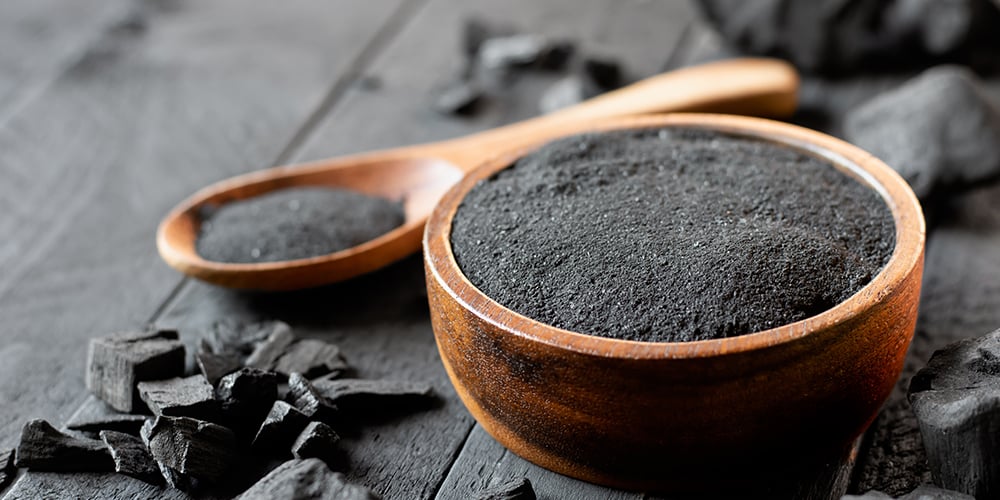
9. Butterfly Pea Flower
Butterfly pea powder is a natural blue food coloring derived from the flowers of the butterfly pea plant. This unique powder adds a beautiful and eye-catching color to beverages, and it's also free from artificial additives and preservatives. A unique feature of this powder is that it changes color from blue to purple when it comes into contact with acidic ingredients. Try making a color-changing mocktail by adding a squeeze of lemon juice and watch the blue color of the butterfly pea powder change to a brilliant violet. With its versatility and natural appeal, butterfly pea powder is a fantastic choice for those looking to enhance their culinary creations with a touch of natural beauty.

Applications Across Industries
Natural food colors are not just for niche organic products—they’re being embraced across industries, including:
1. Bakery & Confectionery: Naturally colored frosting, candy, cakes, cookies, and jellies.
2. Dairy: Yogurt, milk drinks, cheese, and ice cream benefit from plant-based hues.
3. Beverages: Smoothies, fruit juices, carbonated drinks, and health shots.
4. Snack Foods: Colored chips, puffs, and trail mixes.
5. Plant-Based Products: Vibrant plant-based meats, cheeses, and ready meals.
6. Nutraceuticals & Supplements: Capsules, gummies, powders, and tablets.
We work closely with food developers to tailor color solutions that match specific needs in shade intensity, solubility, pH stability, and processing compatibility.

Partner with Us
Whether you’re a small artisan food brand or a multinational manufacturer, we offer scalable, high-quality, and cost-effective natural coloring solutions. Our R&D team is ready to assist with formulation guidance, shelf-life testing, and color matching.
From natural yellow that brightens baked goods, to natural red that gives vibrancy to beverages, and natural green that enhances nutritional appeal—our product range delivers the quality and reliability you need with the sustainability consumers demand.
Conclusion
When it comes to food coloring, natural food powders are becoming increasingly popular in commercial applications. Not only do they add appealing colors to a variety of dishes, but they also offer numerous benefits over traditional food coloring options. Natural food powders are derived from plant-based sources, making them a healthier and more sustainable alternative. They are free from artificial additives, preservatives, and synthetic dyes, making them a more natural choice for consumers. With their bright colors and numerous benefits, natural food powders are a great choice for commercial kitchens looking to enhance the visual appeal of their dishes. Contact us today for inquiry!
Send Inquiry
Related Industry Knowledge
- Can Yeast Extract Beta Glucan Powder Help with Stress and Anxiety?
- Tongkat Ali (Longjack) Powder: Unlocking the Secrets of Nature's Powerhouse
- Boosting Health with Corn Protein Peptide: A Nutritional Powerhouse
- Why Athletes Swear by Creatine Monohydrate
- Chlorophyll: A Natural Solution for Your Skin Issues
- Is aloe vera extract good for you
- Is Buying Spirulina Powder in China Safe?
- Pure Collagen Beauty Secret
- Is beta-glucan good for the skin?
- The Health Benefits of Plant-Based Food Colors


